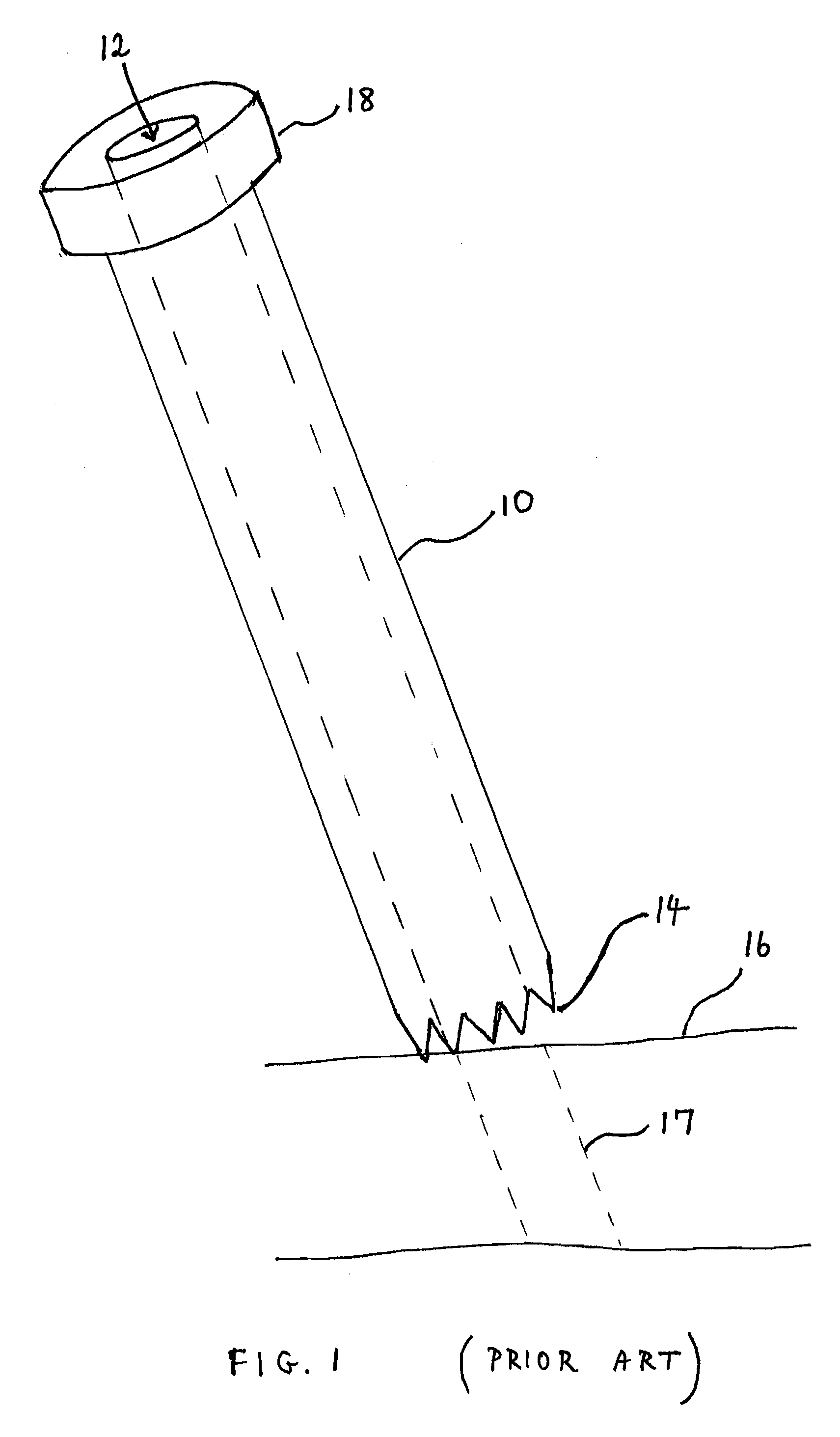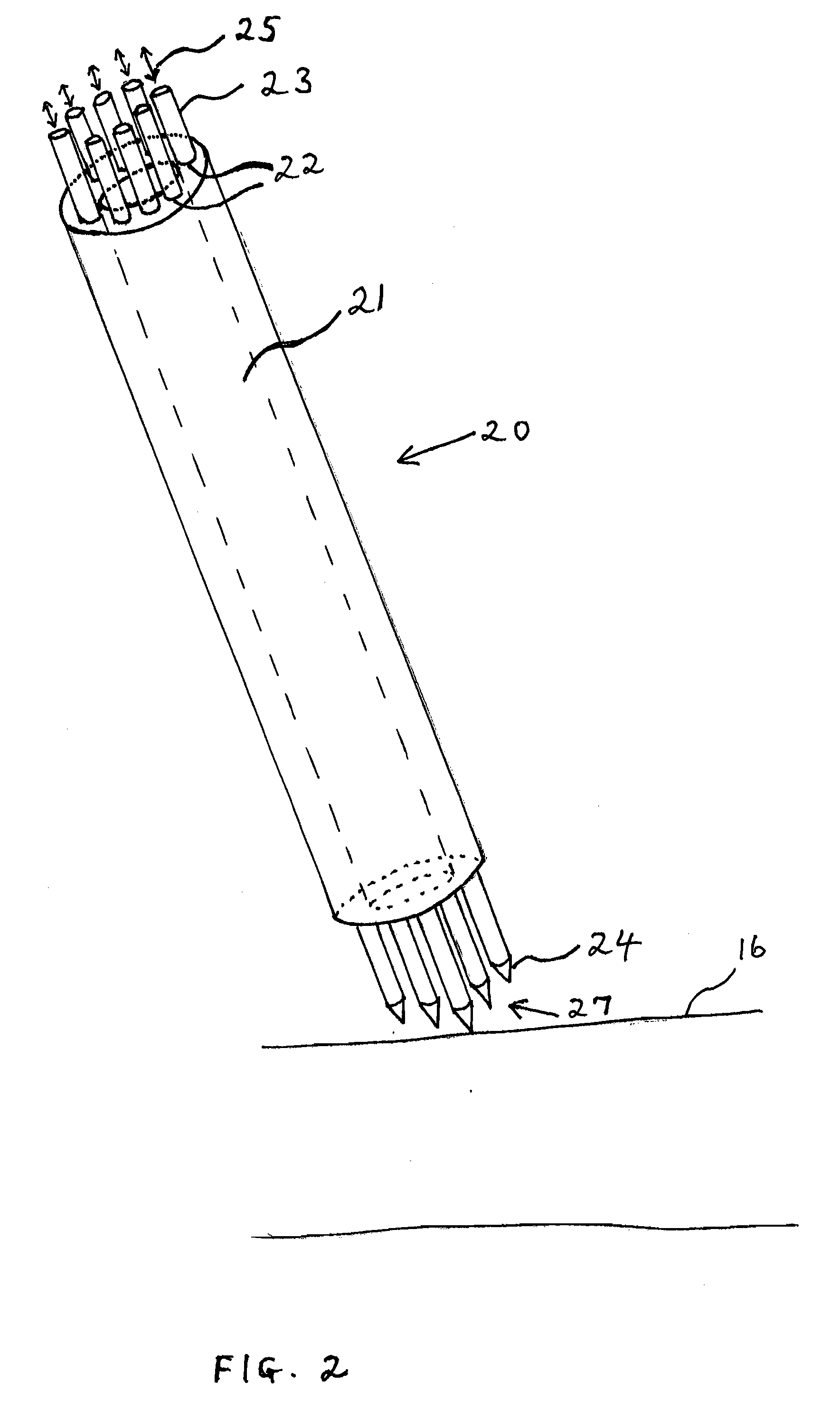Bone drilling cannula
a cannula and bone technology, applied in bone drill guides, infusion syringes, medical science, etc., can solve the problems of significant skid off of bone, inaccurate hole position, and slippage of guide sleeves
- Summary
- Abstract
- Description
- Claims
- Application Information
AI Technical Summary
Benefits of technology
Problems solved by technology
Method used
Image
Examples
Embodiment Construction
[0026]Reference is now made to FIG. 1, which illustrates schematically a prior art drill guide, such as is described in some of the references cited hereinabove. The drill guide 10 has a bore 12 through which the drill or other surgical tool is inserted and guided. At its distal end, the drill guide has a number of circumferentially disposed teeth, generating a serrated edge 14. At its proximal end, the guide preferably has a knurled knob 18 for gripping the guide, or for pushing or striking it, so that the teeth bite into the bone to be operated on, thereby providing positional stability to the guide. In FIG. 1, the guide is shown being applied to the bone 16 of a subject at the angle required to drill the hole 17 desired. Because this angle is not normal to the surface of the bone, and also because of the small diameter of the bone, only a small number of the teeth of the serrated edge, or even just a single tooth, may be in contact with the bone, biting into it to provide positio...
PUM
 Login to View More
Login to View More Abstract
Description
Claims
Application Information
 Login to View More
Login to View More - R&D
- Intellectual Property
- Life Sciences
- Materials
- Tech Scout
- Unparalleled Data Quality
- Higher Quality Content
- 60% Fewer Hallucinations
Browse by: Latest US Patents, China's latest patents, Technical Efficacy Thesaurus, Application Domain, Technology Topic, Popular Technical Reports.
© 2025 PatSnap. All rights reserved.Legal|Privacy policy|Modern Slavery Act Transparency Statement|Sitemap|About US| Contact US: help@patsnap.com



